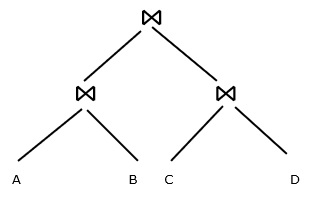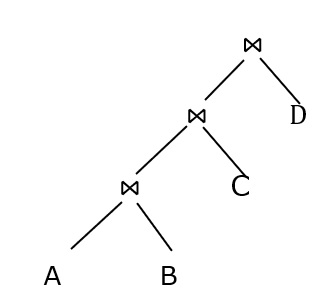
 Data Structure
Data Structure Networking
Networking RDBMS
RDBMS Operating System
Operating System Java
Java MS Excel
MS Excel iOS
iOS HTML
HTML CSS
CSS Android
Android Python
Python C Programming
C Programming C++
C++ C#
C# MongoDB
MongoDB MySQL
MySQL Javascript
Javascript PHP
PHP
- Selected Reading
- UPSC IAS Exams Notes
- Developer's Best Practices
- Questions and Answers
- Effective Resume Writing
- HR Interview Questions
- Computer Glossary
- Who is Who
Explain the evaluation of relational algebra expression(DBMS)
SQL queries are decomposed into query blocks. One query block contains a single SELECT-FROM-WHERE expression, as well as GROUP BY and HAVING clause (if any). Nested queries are split into separate query blocks.
Example
Consider an example given below −
Select lastname, firstname from employee where salary>(select max(salary) from employee where deptname =CSE ; C=(select max(salary) from employee where deptname=CSE); // inner block Select lastname, firstname from employee where salary>c; //outer block
Where C represents the result returned from the inner block.
The relation algebra for the inner block is ?max(salary) (σdname=CSE(employee))
The relation algebra for the outer blocks is Πlastname, firstname(σsalary>c(employee))
The query optimizer would then choose an execution or evaluation plan for each block.
Evaluation of relational algebra expressions
Materialized evaluation − Evaluate one operation at a time. Evaluate the expression in a bottom-up manner and stores intermediate results to temporary files.

Store the result of A ? B in a temporary file.
Store the result of C ? D in a temporary file.
Finally, join the results stored in temporary files.
The overall cost=sum of costs of individual operations + cost of writing intermediate results to disk, cost of writing results to results to temporary files and reading them back is quite high.
Pipelined evaluation − Evaluate several operations simultaneously. Result of one operation is passed to the next operation. Evaluate the expression in a bottom-up manner and don’t store intermediate results to temporary files.

Don’t store the result of A ? B in a temporary file. Instead the result is passed directly for projection with C and so on.

